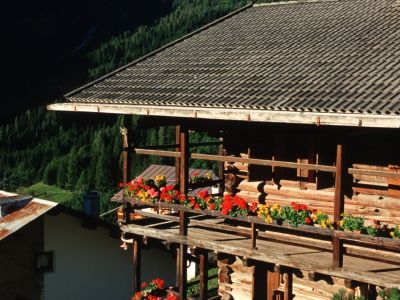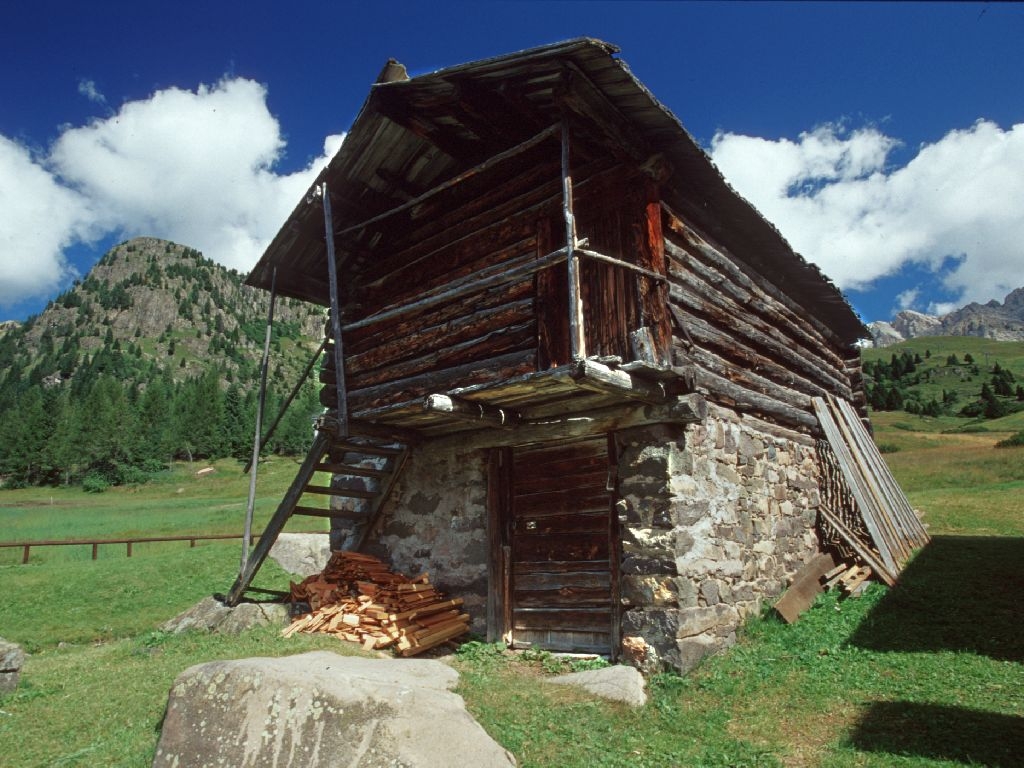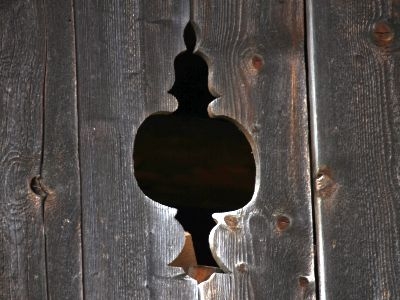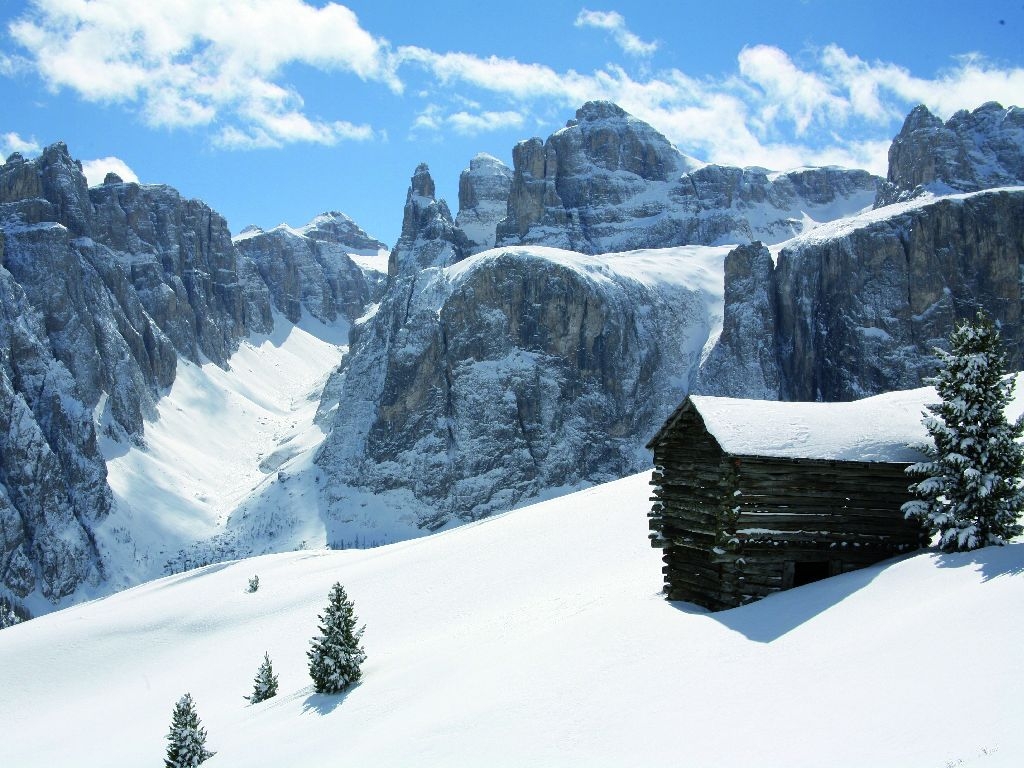



On the front side of each barn, on the roof girder there is the date of construction, and, sometimes, if the dates are more than one, there are also shown the dates of the subsequent restorations. The tabià are located in the sunbathed and privileged locations on the mountains' slopes or in the villages center. Their architecture gives us more information about the construction period: the oldest have horizontal beams, according to a method of construction known as "bunk"; one of them at the top is dated 1665. Starting from 'nineteenth century a new architectural style appears, it is called "a Kolondiei". With the spread of hydraulic sawmills and the evolution of the technique of wood manufacturing, its value increased and it was the need to use it less. Thus to this end the inhabitants developed the system of construction in columns (in Kolondiei), which, while ensuring a hay drying space on the three sides of the building, allows to save on the amount of timber. At first, barns "Kolondiei" style had only one floor, then the more recent ones were built on two floors, sometimes enclosed by a plank. The passage of air is ensured by artistic forms' holes: flowers, clovers, hearts.


During the wars they were used in different ways: in the stables stayed the mules and they became shelters for soldiers and partisans. Today, after being restored, many tabià have become houses with flowers and curtains on the windows, while others are used as storage for firewood.